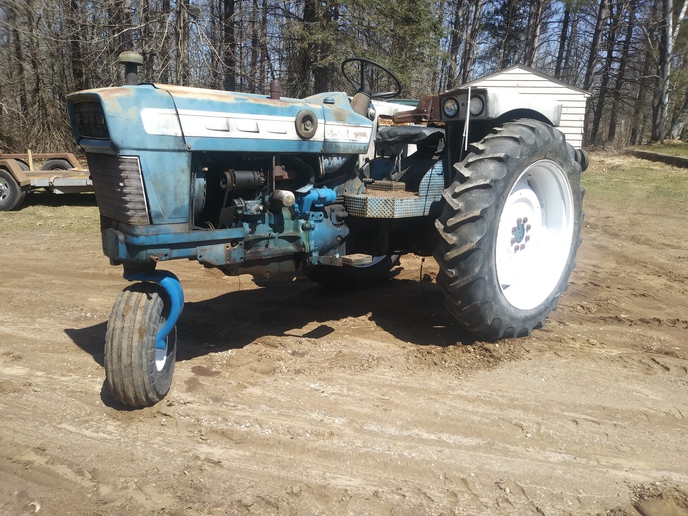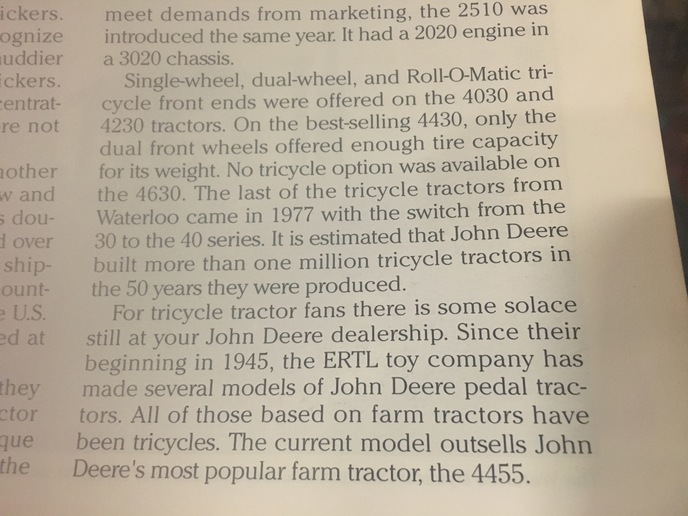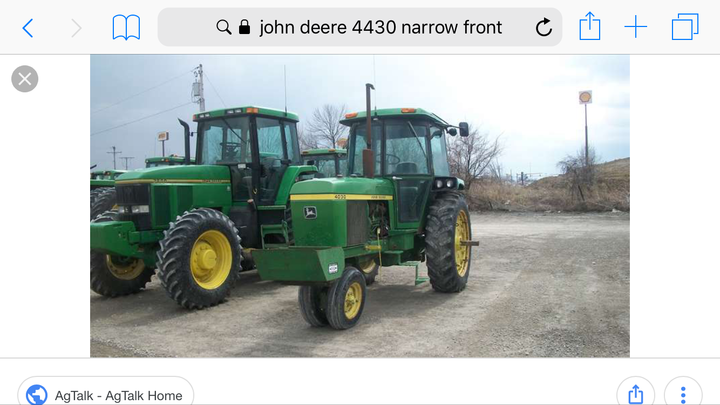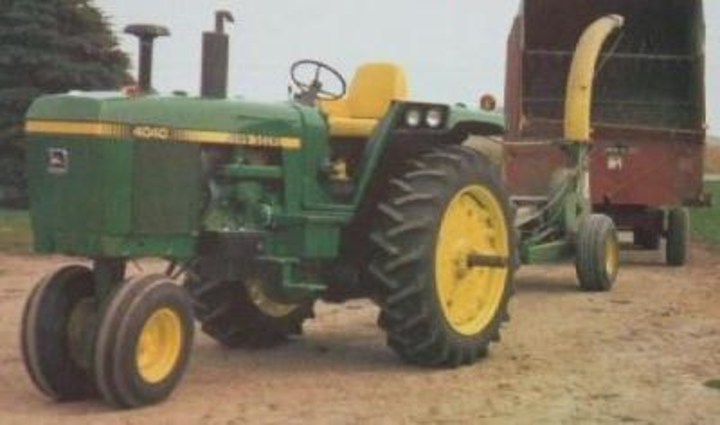You should upgrade or use an alternative browser.
- Thread starter SVcummins
- Start date
Ultradog MN
Well-known Member
- Location
- Twin Cities

Phil in Pa
Member

A neighbor I worked for in the early 80's had a turbo 5000 I spent a lot of time on. I think he still has it doing part time duty.
(quoted from post at 12:06:08 06/16/18) Narrow front ends are rare around here. What is the advantage?
Ron
When changing wheel width you only needed to move the rear wheels on a tractor with narrow front. If you have a front tire go flat on a wide front you have to fix the tire before you can move the tractor. A tire goes flat on a narrow front you can still use the tractor until you get time to fix the flat. Sometimes you can drive a narrow front tractor all summer before you notice one is out of air.
tomstractorsandtoys
Well-known Member
Roger in Iowa
Well-known Member
I always preferred NFE, BTO neighbor I worked for always kept an open station NFE 4020-D, last one he has was a '69 Side Console. Was actually my favorite tractor after the Air Conditioning died in his 4320 with factory ROPS cab.
Dad only had 2 WFE tractors, everything else,8 tractors were NFE, the JD R diesel was WFE of course, and the 4010-D, The R was short-lived, Road Commisioner talked Dad into selling it to the township, where it's weak PTO failed ever year for 3 years and they dumped it, 4010 was O-K to run, when it was running right, but was a money pit!
Now I know some people are going to yell about safety. Couple of AG engineering courses at several colleges did studies on the roll over effect of a NF tractor. They found that that the ONLY operation where a WFE was less prone to roll was going downhill with a load behind pushing the tractor. So in my neck of the woods where a lot of people rolled tractors at one time or another with most of em "back then" were guys picking corn with a towed picking and wagon, chopping corn baling hay, pulling a towed combine and pulling loaded grain wagons. Around here you are either going uphill or down. And when people saw far more NF tractors rolling they, using reason, figured it was the NF. They didn't think about how it was being used when it rolled.
Rick
Rich'sToys
Well-known Member
- Location
- Southern MN
I've seen a few front mounted cultivators on wide front tractors, but it had to have been a major undertaking to put them on and off!
Of course, now days no one cultivates at all!
Eldon (WA)
Well-known Member
Yeah, no way I would brush hog ditches or hillsides with a nf tractor....you are just asking for trouble. Plus I like the idea the cheaper tire leads the way....(quoted from post at 18:52:03 06/16/18) I have been caught buy the front axle on my wide front end
tractors several times on steep ditch banks and things like that
I?d hate to see what would have happened with a narrow front
end
Brendon-KS
Well-known Member
- Location
- Goessel, KS
conclusion. This in direct conflict with the research project I was involved with during my ag
engineering schooling.
showcrop
Well-known Member
(quoted from post at 04:04:08 06/17/18) I'd like to read the reports from those studies to understand how they arrived at that their
conclusion. This in direct conflict with the research project I was involved with during my ag
engineering schooling.
Brendon, It is really quite simple. As you know you front axle pivots at the center, and it is a fair amount, around 15 degrees. When you are on a sidehill, if something causes your tractor to suddenly lean more steeply, your chassis has to travel that amount of rotation on the pivot before the stop engages. it may, or may not catch you. Wide fronts are more stable on sidehills but not by as much as is commonly thought. The best defense against sidehill upset, other than selling the tractor, is to lower the center of gravity. The best way to lower the center of gravity is with fluid in the tires, most of it being below the tire center.
Brendon-KS
Well-known Member
- Location
- Goessel, KS
this point the tractor is balanced about its "tipping axis". The width of the front axle never
comes into play. The key is the height at which the tractor pivots at the front end. With a
narrow front this point is at ground level while on a wide front it is elevated by up to several
feet. This raised tipping point means that the WFE tractor has to lean over farther for the
center of gravity to cross over the tipping axis. A similar situation occurs when turning a
corner at higher speeds. The centrifugal force acting horizontally at the center of gravity is
closer to the tipping axis which means it is applying less moment to unload the inside tire. The
WFE vs NFE stability differences are more pronounced the farther forward and upward the center of
gravity is located, such as with a loader. As you say, the best defense is to lower the
tractor's CG and also have the rear tread width set as wide as possible.
Traditional Farmer
Well-known Member
- Location
- Virginia
BarnyardEngineering
Well-known Member
- Location
- Rochester, NY
It's silly to compare a WF tractor set as narrow as possible, and a NF tractor with the rear wheels set out to maximum width, and proclaim NF tractors are "safer."
You can set the WF tractors out that wide too and they'd be just as stable and safe, and they'd ride better too due to the oscillating front axle.
showcrop
Well-known Member
(quoted from post at 04:29:08 06/18/18) Well yeah, when you're comparing apples to hand grenades; the apples taste much better and the hand grenades hurt a lot more.
It's silly to compare a WF tractor set as narrow as possible, and a NF tractor with the rear wheels set out to maximum width, and proclaim NF tractors are "safer."
You can set the WF tractors out that wide too and they'd be just as stable and safe, and they'd ride better too due to the oscillating front axle.
Barnyard, I don't see where Traditional Farmer said what you said he said at all. He just said that his D-15 is safer than SOME WF tractors that he owns.
Similar threads
- Replies
- 12
- Views
- 5K
We sell tractor parts! We have the parts you need to repair your tractor - the right parts. Our low prices and years of research make us your best choice when you need parts. Shop Online Today.
Copyright © 1997-2024 Yesterday's Tractor Co.
All Rights Reserved. Reproduction of any part of this website, including design and content, without written permission is strictly prohibited. Trade Marks and Trade Names contained and used in this Website are those of others, and are used in this Website in a descriptive sense to refer to the products of others. Use of this Web site constitutes acceptance of our User Agreement and Privacy Policy TRADEMARK DISCLAIMER: Tradenames and Trademarks referred to within Yesterday's Tractor Co. products and within the Yesterday's Tractor Co. websites are the property of their respective trademark holders. None of these trademark holders are affiliated with Yesterday's Tractor Co., our products, or our website nor are we sponsored by them. John Deere and its logos are the registered trademarks of the John Deere Corporation. Agco, Agco Allis, White, Massey Ferguson and their logos are the registered trademarks of AGCO Corporation. Case, Case-IH, Farmall, International Harvester, New Holland and their logos are registered trademarks of CNH Global N.V.
Yesterday's Tractors - Antique Tractor Headquarters
Website Accessibility Policy





